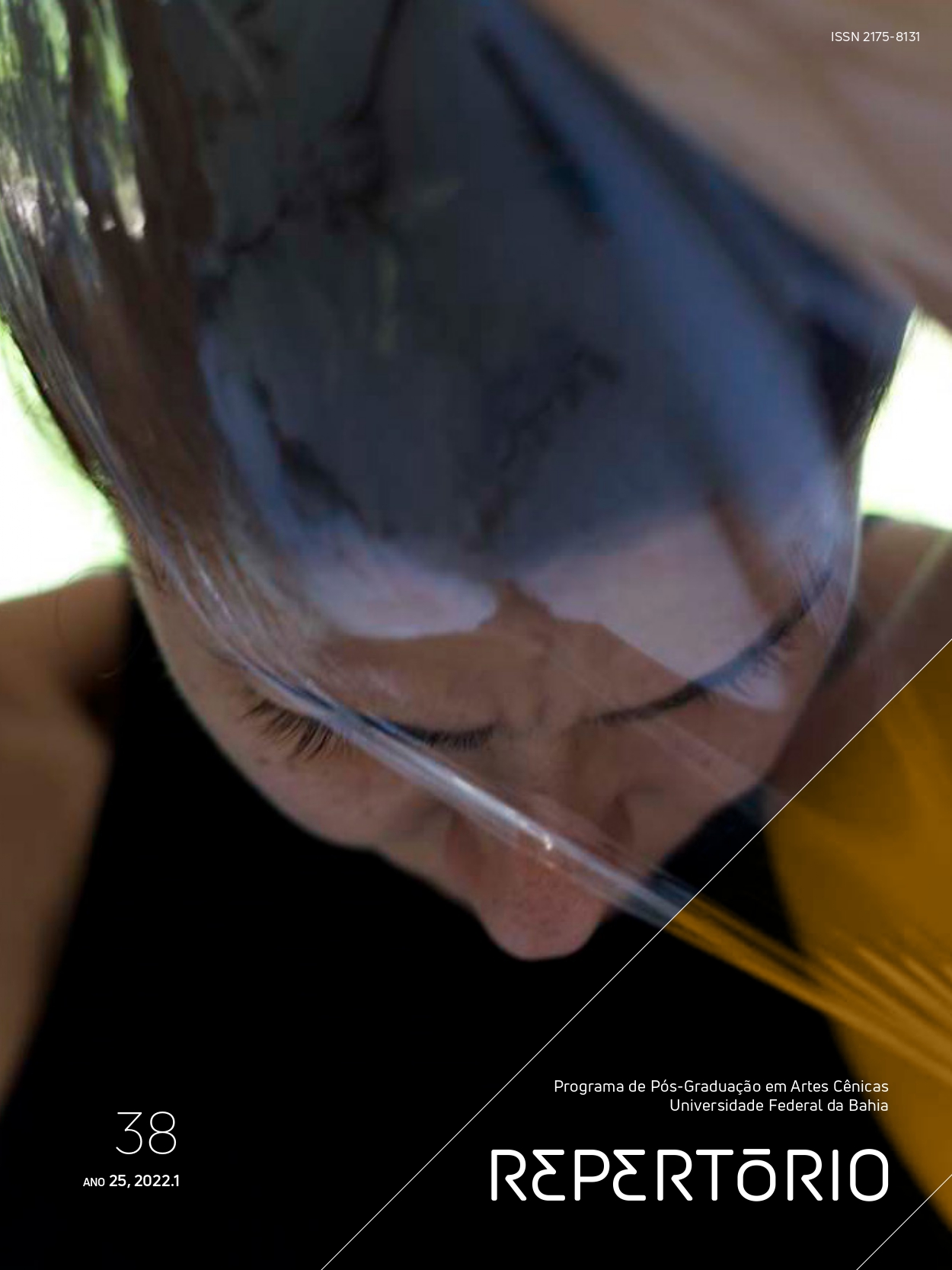Immersive processes – kinesthetic perception and its role in the synthesis of sensorimotor knowledge in life and in art
DOI:
https://doi.org/10.9771/rr.v1i38.46432Keywords:
Dance. Perception. Habits. Empathy. Kinesthesia.Abstract
Departing from the description of an immersion experience lived by one of the authors, during a Zoom video conference, - in which, due to degrees of involvement, the spaces on the screens were confused and mixed in her perception - the article intends to build a reflection about the role of perceptual and motor habits in our relationship with the environment and with others, both in the context of everyday life as well as in art. The hypothesis created is that specific sensorimotor skills, requested in current virtual interactions, and mediated by the platforms in use, are still in process of development and integration. Adaptation and habituation are underway. In light of contributions from the embodied cognition approach, by cognitive sciences, as well as aesthetic empathy, this hypothesis will lead to the construction of an argument that focuses on the importance of kinesthetic perception in our immersions in life, in artistic creation and appreciation.
Downloads
References
BERTHOZ, Alain. The brain’s sense of movement: perspectives in cognitive neuroscience. Cambridge: Harvard University Press, 2000.
CASTANHEIRA, José Cláudio S. Do cogito ao inconsciente: O corpo na experiência cinematográfica. Contracampo: Revista do programa de pós-graduação em comunicação da UFF, Niterói, n. 21, ago. 2010.
DEWEY, John. A arte como experiência. São Paulo: Martins Martins Fontes, 2010.
FINGERHUT, Joerg; HEIMANN, Katrin. Movies and the Mind: On Our Filmic Body. In: DURT, Christoph; FUCHS, Thomas; TEWES, Christian. Embodiment, Enaction, and Culture: Investigating the Constitution of the Shared World. Cambridge, MA: MIT Press, 2017.
FORSYTHE, William. Entrevista. In: GAENSHEIMER, Susanne; KRAMER, Mario. William Forsythe: the fact of matter. Bielefeld: Kerber Verlag, 2016.
GODARD, Hubert. Foreword. In: MCHOSE, Caryn; FRANK, Kevin. How life moves: explorations in meaning and body awareness. Berkeley: North Atlantic Books, 2006.
GODARD, Hubert. Buracos negros: uma entrevista com Hubert Godard. O Percevejo Online, Rio de Janeiro, jul/dez 2010, v.2, n.2, p.1-21.
NOË, Alva. Action in perception. Cambridge: MIT Press, 2006.
NOË, Alva. Out of our heads: why you are not your brain, and other lessons from the biology of consciousness. New York: Hill and Wang, 2010.
NOË, Alva. Varieties of presence. Cambridge: Harvard University Press, 2012.
NOË, Alva; O`REGAN, J. Kevin. A sensorimotor account of vision and visual consciousness. Behavioral and Brain Sciences. v.25, n.5, p. 939-1031, 2001.
SCHMARSOW, August. Das Wesen der architektonischen Schöpfung. Leipzig: Karl W. Hiersemann Verlag, 1894.
SCHMARSOW, August. Über die Dimensionen de meschlichen Raumgebilde – 1896 In: FRIEDRICH, Thomas; GLEITER, Joerg. (Hg.) Einfühlung und phänomenologische Reduktion: Grundlagentexte zu Architektur, Design und Kunst. Berlin: LIT Verlag, 2007.
Downloads
Published
How to Cite
Issue
Section
License
Copyright (c) 2022 Lilian Seixas Graça Graça, Beatriz Adeodato Alves de Souza

This work is licensed under a Creative Commons Attribution 4.0 International License.
Os/as usuários/as poderão ler, baixar, copiar, distribuir, imprimir os textos integralmente desde que sejam claramente mencionadas as referências aos/às autores/as e à Revista Repertório. A utilização dos textos em outros modos depende da aprovação dos/as autores/as e deste periódico.
Os conteúdos emitidos em textos publicados são de responsabilidade exclusiva de seus/suas autores/as e não refletem necessariamente as opiniões da Revista Repertório.








